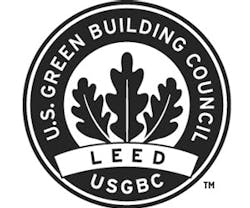New LEED Program Release Delayed
The U.S. Green Building Council (USGBC) announced recently that it will delay voting on LEED 2012 until June 1, 2013. To reflect this change, LEED 2012 has been renamed LEED v4.
“This is in response to our members’ desire to have more time to absorb the changes in this next version,” says Rick Fedrizzi, president and CEO of USGBC. “Then we can take the first part of 2013 to make sure the consensus body has everything it needs for a successful ballot.”
The move also came in response to a growing outcry from architects and other building industry professionals – including many who have supported LEED since it began – who had three related concerns.
The first was that the proposed changes were simply too much and too fast, especially in a weak real estate market. The second argues that some proposals needed more refinement, especially significant changes in the Materials & Resources category. The third concern was that necessary tools and resources required to achieve credits would not be widely available before the November 2012 launch.
Prior to the release of the fourth draft of LEED 2012, a new credit, Avoidance of Chemicals of Concern, prohibited the use of chemicals found in 90% of the most common roofing membranes and nearly 90% of the most common types of roof insulation in North America, according to the Center for Environmental Innovation in Roofing.
The center posits that the LEED development process lacks a true consensus-based system for resolving differences and takes a “closed-door approach.”
It suggests use of the American National Standards Institute (ANSI) requirements for standard development, an “open and fair process that ensures all interested and affected parties have an opportunity to participate.”
The center advocates for a more inclusive ANSI-accredited process, such as what Green Globes uses, and says that “the process put in place by USGBC inhibits the full participation of stakeholders from the buildings materials industry.”
Other changes include keeping LEED 2009 open for registration for three years and introducing a fifth public comment period that will run from Oct. 2, 2012 to Dec. 10, 2012.
